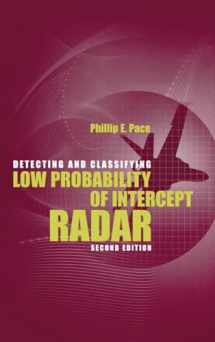
Detectg Classifying Low Probability 2e (Artech House Remote Sensing Library)
Book details
Summary
Description
Low probability of intercept (LPI) radar is increasingly critical to covert surveillance, target tracking and stealth operations - as is the capability to detect it. Now, the world's most authoritative book on LPI emitter design and counter-LPI techniques explores the latest advances in the field in a new edition complete with ready-to-use MATLAB software simulations for every LPI modulation in the book. Supported by 360 task-clarifying illustrations, the book offers radar engineers expert guidance on the design of LPI emitter and intercept receivers and the development of digital signal processing techniques for detecting and classifying LPI modulations. This titleincludes a CD-ROM! It contains valuable MATLAB programs that help professionals design various LPI emitter architectures and waveform modulations to help them with their detection and classification work.


We would LOVE it if you could help us and other readers by reviewing the book
Book review



